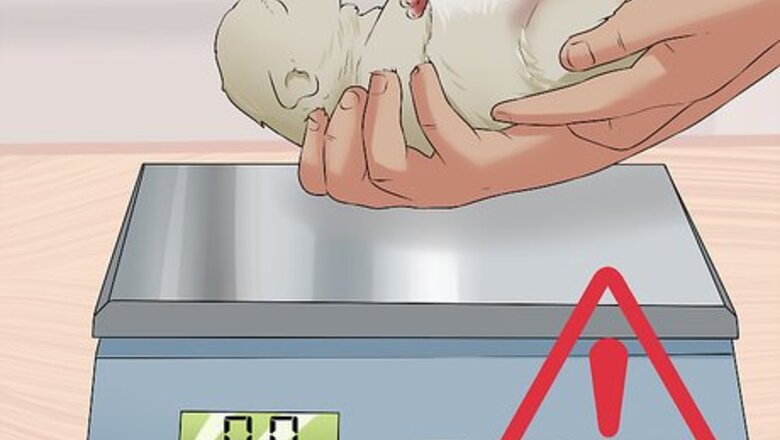
views
Consulting with a Veterinarian
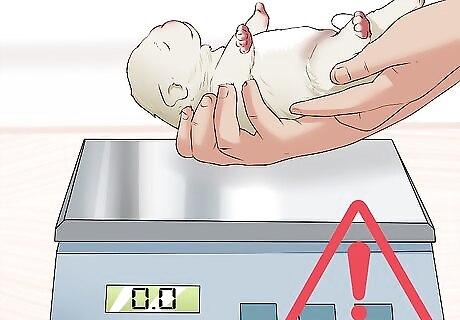
Monitor the litter closely. Look for abnormalities like pups without suckling instincts, excessive crying, and physical deformities such as flattened chests or any absent body parts. Seek emergency care as soon as possible if you suspect something’s not right. Be ready to report your observations to the vet. Take an initial weight of each pup after birth. Continue to weigh them a couple times per day afterward. Within 24 hours, a pup’s weight might decrease by less than 10%, but should increase steadily after the first day. Take the pups’ and mother’s temperatures at least a couple times per day. Normal rectal temperatures for puppies are from 95 to 99 degrees Fahrenheit (35 to 37.2 degrees Celsius) during the first week of life, and 97 to 100 degrees Fahrenheit (36.1 to 37.8 degrees Celsius) during the second and third weeks of life. Adult dogs and puppies older than four weeks have temperatures that run about 100 to 102 degrees Fahrenheit (37.8 to 38.9 degrees Celsius). Be ready to describe the mother’s diet to the vet. Pregnant and nursing dogs require special diets, which should include a high quality food that consists of 29% protein, 17% fat, and less than 5% fiber. Closely monitor nursing and make sure nursing begins within a maximum of 12 hours of birth. This is because the mother dog will produce colostrum—a nutrient rich breast milk—during this time, which can promote good health in her puppies. Note if the mother disregards or is disinterested in nursing or attending to the pups. Be ready to describe any interactions your pregnant dog had with other animals in the weeks prior to delivery. This will help the vet diagnose any communicable diseases that might be affecting the pups, such as bacterial or viral infections. The mother may also pass intestinal parasites onto her dogs.

Call the vet if any pups separate from the litter or cry excessively. Newborn pups should do little more than nurse and sleep, and should cry only very little, if at all. They should huddle with the other pups without crawling away from the group. If pups deviate from any of these normal behaviors, call the vet immediately.
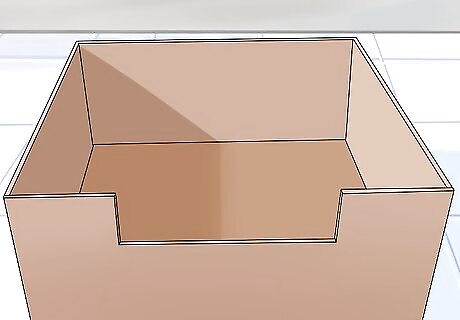
Prepare the whelp box for transport. The vet will most likely have you bring the mother and full litter in for examination. Use the whelp box to transport the mother and pups. It’s a good idea to create a whelp box instead of just designating a whelp area for your dog to deliver its litter. That way, you’ll be able to transport the mother and litter more easily in the event that emergency care is needed. You can use a shallow cardboard box that has a shelf or separate area in it where the puppies can go while the mother is sleeping (to prevent her from rolling over onto them in her sleep). Line the box with several sheets of newspaper or puppy pads before she delivers the puppies, and then switch to a thinner lining, such as an old bedsheet after she delivers.
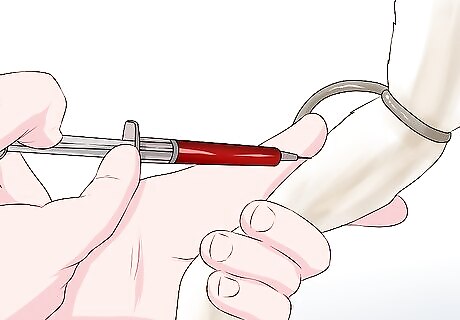
Have the mother tested for malnutrition and infection. The vet will screen the mother’s blood for low iron and protein content and ask you about her diet. They’ll also check for birth defects and test for viral and bacterial infections, such as E. coli and parvovirus. These steps will help the vet determine whether antibiotics should be administered.
Separating the Pup from the Litter
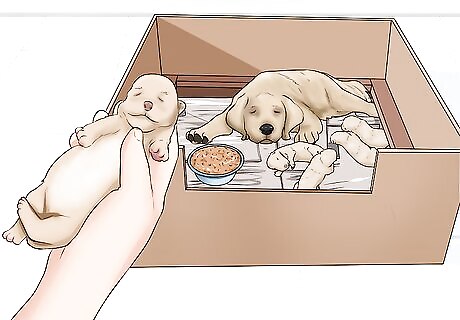
Separate the fading pup from the litter. If any pups do show signs of fading or cry excessively, you should separate them from the litter and call the vet for help. Depending on the symptoms you report, the vet will instruct you to bring the fading pup in for emergency care or advise you attempt alternative feeding methods.
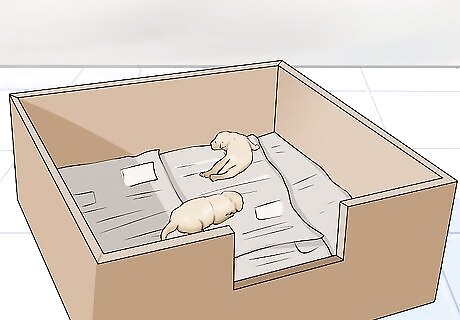
Place the fading pup in a separate box. After removing any fading pups from the litter, place them in a separate whelp box. Line the box’s floor with a bath mat or newspaper. Go with newspaper if the pup is emitting discharges or if soiling is a concern. You’ll be able to quickly swap out dirty paper for a clean replacement.
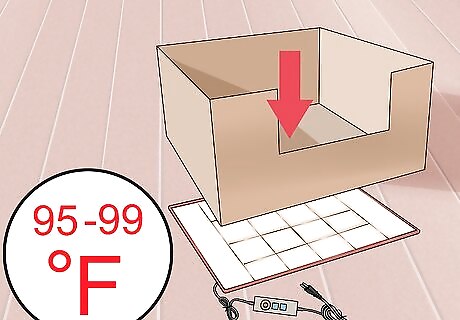
Keep the fading pup warm. Use a heating pad to warm the separate container. Be sure to check the pad and box frequently with the back of your hand to make sure they aren’t hot to the touch. Keep a newborn pup’s temperature within 95 and 99 degrees Fahrenheit (34.4 to 37.2 degrees Celsius). Place the heating pad under the box’s floor lining, or if you’re using a wood box, you can place the heat under the box to let the wood conduct heat. However, make sure that the heating pad does not cover the entire area. The puppies should be able to crawl off of the heating pad if they get too warm.
Providing Emergency Care
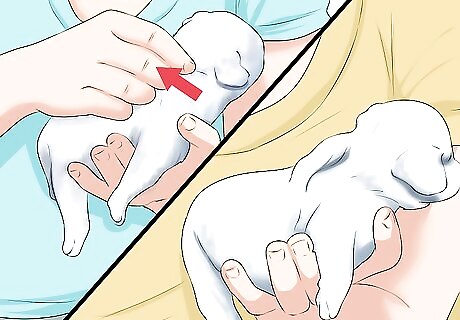
Check the pups for dehydration. Gently pull back the skin between pups’ shoulders. It should snap back into place quickly. If it doesn’t spring back into place promptly, the puppy is likely dehydrated. Under the vet’s advisement, you can try using a clean eyedropper to rub a bit of corn syrup on the puppies gums and then use an eyedropper to give him some water. You can also use puppy milk replacer.
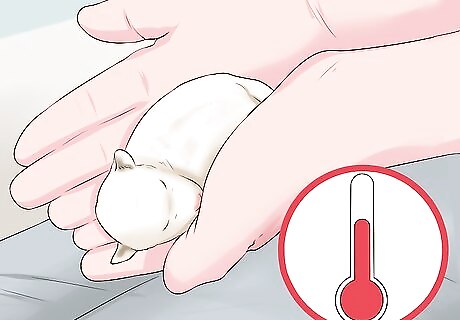
Warm the pups gradually if they’re too chilled to nurse. Chilled pups are unable to suckle and digest food, but warming them too quickly can be dangerous. The best way to carefully and gradually warm a chilled pup is to hold it against a large patch of your skin. That way, your body will transfer to the pup without overheating it. If pups are too cold, they won’t be able to suckle or digest food, which will cause fading. Pups under a week that are too warm aren’t yet able to pant to reduce their body temperature.

Give the pup a sugar or honey solution. If any pups are dehydrated or if you haven’t observed them nursing, call the vet and ask if you should administer honey, corn syrup, or a sugar-water solution. If the vet approves, put on surgical gloves and administer a drop of the syrup onto the pup’s gums every few hours. Avoid alternative feeding without the vet’s approval.
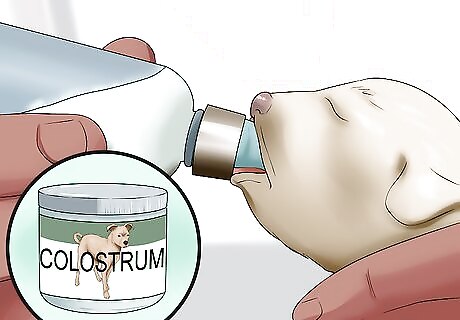
Feed the pup colostrum. During the first one to two days of delivery, the mother produces a special milk called colostrum. By feeding on this fluid within 12 hours of birth, the pups ingest needed antibodies from the mother’s bloodstream. Without prompt nursing, the pups will be susceptible to infection in addition to dehydration and malnutrition. If you don’t have supplemental colostrum on hand, you can attempt to express it from the mother’s teat into an eyedropper and manually feed a pup that hasn’t suckled. Your vet can also attempt this process, might have a supply of colostrum on hand, or can supply any fading pups with blood plasma from a healthy dog.
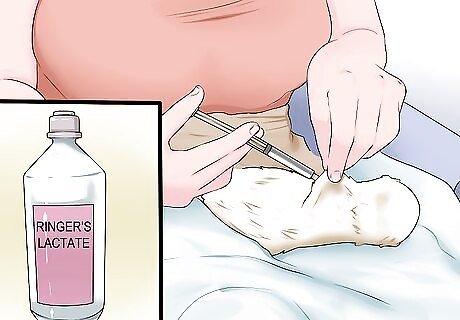
Inject subcutaneous fluids. Under the vet’s advisement, use a sterile drawing syringe to inject a Ringer’s lactate solution subcutaneously, or beneath the skin. Be sure the solution is warm, and never inject cold solution. Avoid touching the tip of the syringe or otherwise contaminating it. Have your vet recommend an amount suitable for the pup.
















Comments
0 comment